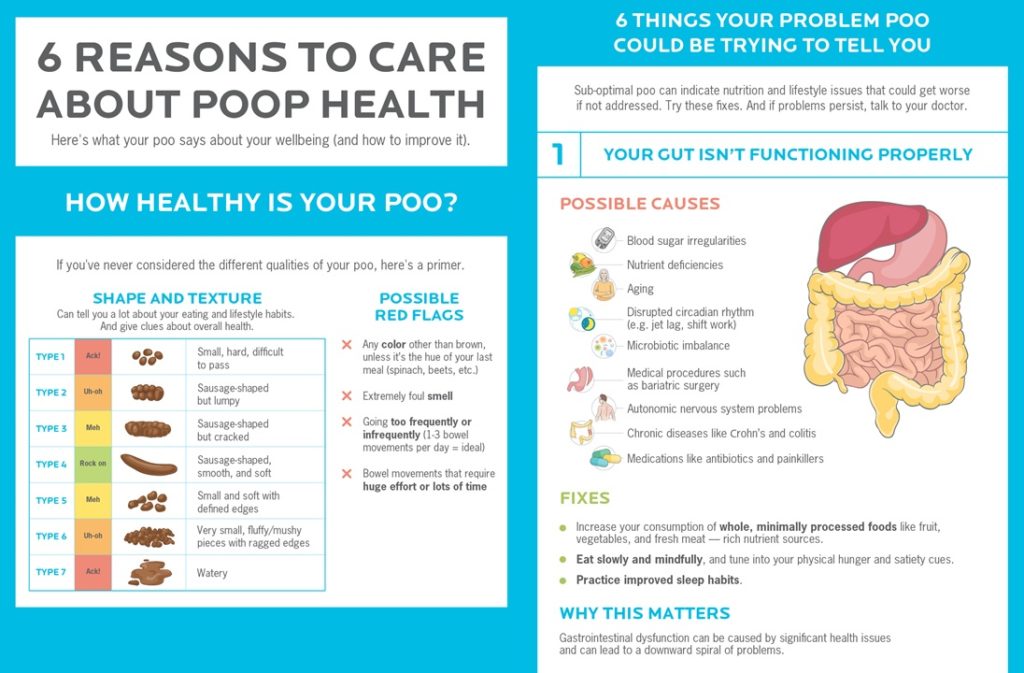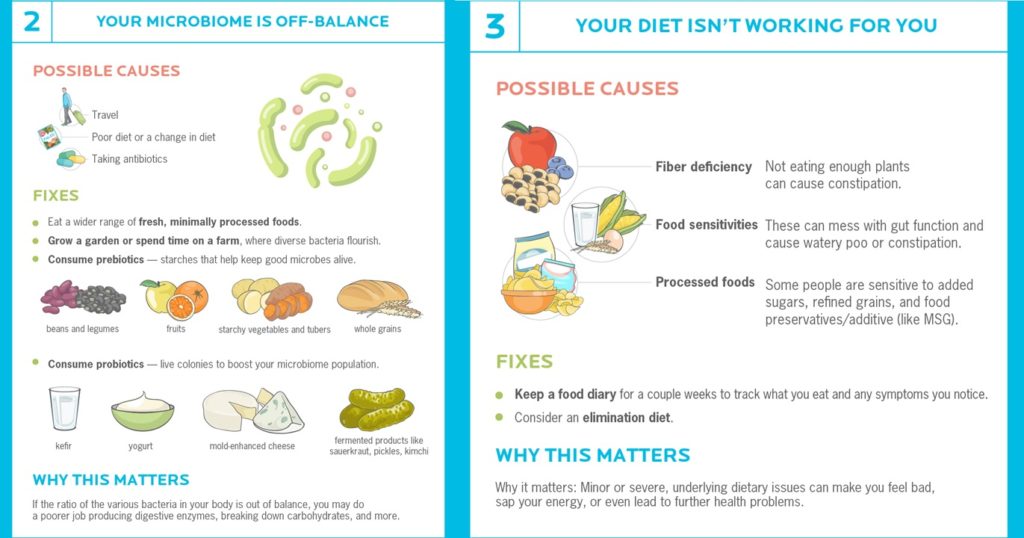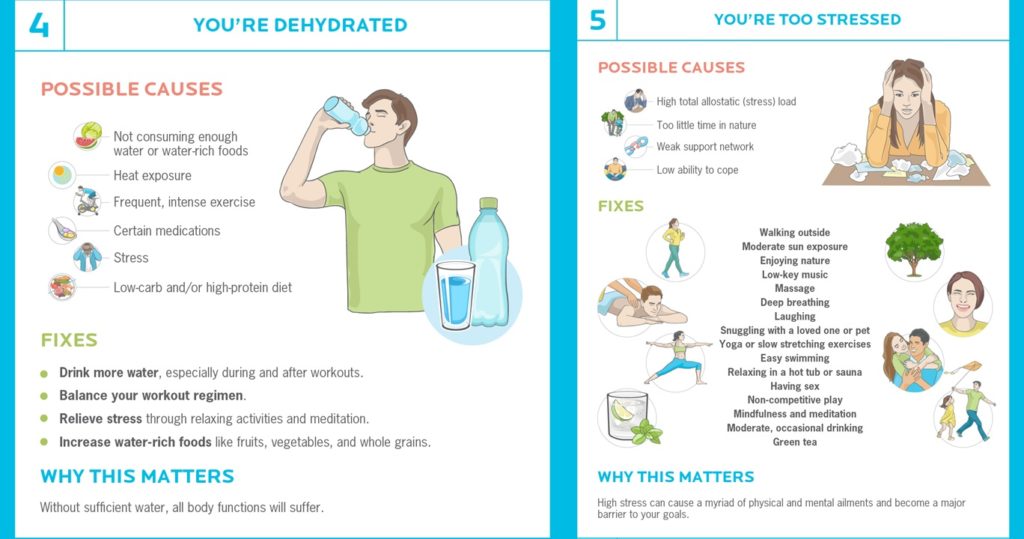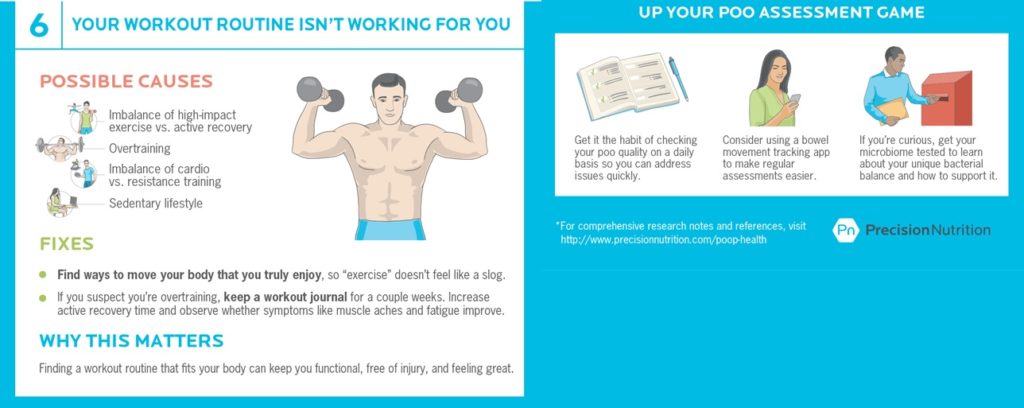Uncomfortable Subject Matter
by Erik Castiglione
One of the definitions that CrossFit uses for fitness is a kind of “super wellness.” If you’re healthy, your body functions normally – that includes input and output. Bathroom humor is often referred to as the lowest common denominator, but it’s still funny (you think so too, don’t lie). We often use humor to make uncomfortable topics more bearable, hence bathroom jokes. But it is important to discuss bodily functions in terms of health and wellness, because they can give us some insight when something is wrong. There is good reason that blood and urine are analyzed during comprehensive health checks. So, let’s discuss some uncomfortable subject matter.
Gut Health
There’s a lot of ongoing research into gut health and how it affects many other parts of the body. Gut health has been shown to affect our moods, immune systems, hormones, mental health, etc. Poor gut health is also linked to an increased risk of cancer and autoimmune disorders. By gut, we are talking specifically about our intestines.
After our food passes through our stomachs and is broken down, it passes through our intestines, and that’s where nutrients are absorbed. It is the bacteria in our guts that are responsible for this. Probiotics are encouraged these days to help people with digestion and to make sure that we get maximal nutrient absorption for optimal health. In extreme instances of poor gut health or gut infection, patients can receive a fecal transplant to reintroduce good bacteria to the gut microbiome and restore health.
We can monitor our gut health by keeping an eye on what comes out. Yes, poop can tell us a lot about what’s going on inside our bodies. Just as we monitor the bowel movements of newborn babies for clues to health, we can do the same for ourselves. Here’s a great infographic from Precision Nutrition with more info:
Pelvic Floor Health
CrossFit HQ had an opportunity to address this topic years ago, and instead made a joke out of it. While this topic mostly applies to women, it can apply to men too. Have you ever “leaked” during box jumps, double unders, or a heavy lift? For our mothers in class, how about when you sneeze? While our gym demographic has changed a bit, there was a running joke for a while in the 845am class that anytime we had double unders in a metcon, there would be a pre-WOD line for the bathroom.
“Leaking” is a sign of pelvic floor dysfunction. What is the pelvic floor? It’s a group of muscles and ligaments that form a “sling” to support your bladder, bowels, and uterus or prostate. Contracting and relaxing your pelvic floor allows you to control your bowel movements and urination. So, an inability to control your pelvic floor correspondingly leads to leaking.
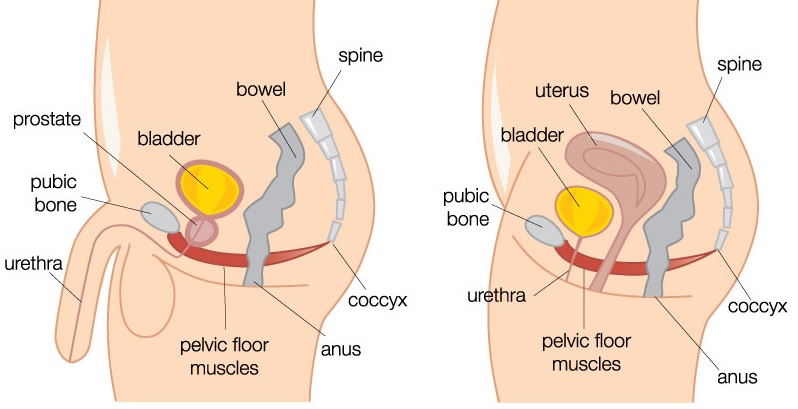
Why do we care? I’ve previously discussed the benefits of good posture. Poor posture, specifically anterior pelvic tilt, can be a cause of pelvic floor dysfunction. Additionally, the pelvic floor forms the base of our “cannister.” When we brace and breathe before lifting/exercising, we fill our “cannister” with air to support our organs and protect ourselves. If the floor of the cannister isn’t functioning properly we won’t be able to brace as well.

If you do “leak,” step 1 is to focus on your posture. Kegel exercises can help too, but they might not be enough. To completely resolve this, I would refer you to a physical therapist specializing in pelvic floor.
Menstrual Cycle and Exercise
While this topic concerns women, men should pay attention too. Coaches, we can use this info to help scale our women as needed, or at the very least, understand if they happen to be feeling off and decide to go a little lighter. For our women, hopefully you track your cycles, or at least have some idea of where you are so things aren’t a complete surprise for you. So let’s break it down.
- Follicular phase – this is the first phase of the ovarian menstrual cycle, when the ovaries are preparing to release an egg. Follicle stimulating hormones run high during this phase, along with other hormones that are great for athletic performance. This is a great time for female athletic performance – power output is higher, and you’ll feel like you can push harder than usual. This phase lasts 14 days on average.
- Ovulation – this is the second phase of the ovarian menstrual cycle, and it lasts roughly 24 hours. The gains in power output experienced during the follicular phase stop.
- Luteal phase – the third and final stage. Estrogen production ramps up, and PMS and menstruation occur during this phase. It usually lasts 14 days. During this phase, it’s harder for athletes to recover. If you feel like you can’t push hard during this phase and need to dial back the intensity a little bit, that’s normal. The mental stress and physical discomfort of PMS can also take a toll, so adjust your workouts as necessary.
Well, we did it. We made it through some material that hopefully wasn’t too uncomfortable for you. It’s important to discuss, because it can have HUGE health implications, and too often we’re too puritanical about it. Just as we need to be comfortable being uncomfortable when it comes to exercise, we also need to be able to discuss bodily functions. Within the context of health, at least. See you in the gym.

